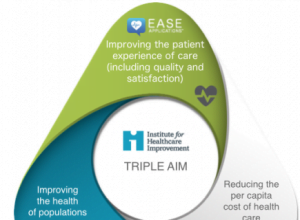Hospitals don’t try as hard as they should to reduce surgical complications because it tends to hurt them financially. In general, hospitals end up getting paid to treat complications –including preventable ones– while reducing complications takes time and effort while leaving empty beds that produce no revenue. In Health Affairs, Dan C. Crupka et al.
Hospitals don’t try as hard as they should to reduce surgical complications because it tends to hurt them financially. In general, hospitals end up getting paid to treat complications –including preventable ones– while reducing complications takes time and effort while leaving empty beds that produce no revenue. In Health Affairs, Dan C. Crupka et al. (The Impact On Hospitals Of Reducing Surgical Complications Suggests Many Will Need Shared Savings Programs With Payers) recommend that hospitals look to payers to provide higher reimbursement to ensure that incentives align. They argue that this is particularly important for hospitals whose surgical volumes are not growing.
It’s an interesting analysis, but I suggest that there are better ways to reach the same goal.
It’s worthwhile to compare a hospital to a manufacturing organization –not to dehumanize patients, doctors, and other hospital staff– but to make a stark economic point. A factory takes raw materials then performs various value added processes that create a product that is sold in the market. If the product is made well the company can sell it for the market rate. If there is a flaw in the process, some capacity can be diverted for rework, and if all goes well the second or third time through the product can still be sold for the market rate. If things get too screwed up the materials are scrapped and the factory makes nothing (except the scrap value).
Factories that run smooth processes make money. They get paid for everything they produce and they don’t waste capacity or raw materials through flaws. Poorly run factories struggle. Of course they only get paid for what they produce, and their cost per unit is higher because they make errors along the way and have to scrap some of their materials. They don’t get paid more per unit when they improve, but if they don’t improve they may go out of business. As a result well run factories can be highly profitable while poorly ones can’t survive.
Translating this into a hospital context the patients are the raw materials, complications are process errors leading to rework, and death of the patient is the scrap. But traditionally hospitals have been paid for rework and for scrap, too. No analogy is perfect of course. For one thing, factories can reject flawed raw materials that have little chance of making it through the process to become a high quality product, whereas that’s not usually an option for hospitals especially for non-elective procedures.
I’d like to see the hospital world move closer to the incentives of the factory environment. Global payments and bonuses for superior outcomes can help achieve that goal. Greater transparency on quality can help hospitals that are improving increase their market share and thereby fill their extra beds with new patients.
Greater consumer engagement and patient empowerment can greatly accelerate the process. After all, iron ore doesn’t care whether it becomes a Chrysler on the first pass, gets reworked along the way, or goes to the scrap heap. But patients (and their families) certainly do express a strong preference for a cure instead of an extended stay in the hospital or an endless one in the grave.





